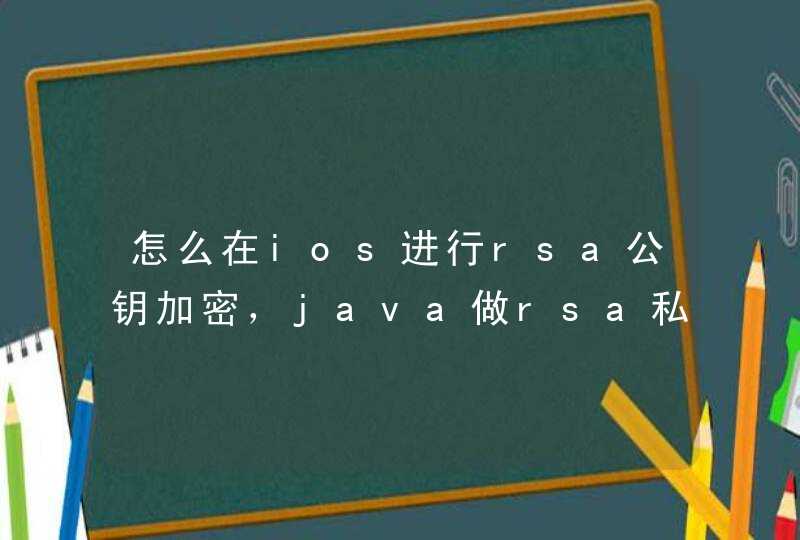
当前gem的版本支持Ruby 1.9.3或者更新版本,对于早期的Ruby 1.8.7和1.9.2版本不再提供支持。rest-client自身依赖于其他三个gem:
mime-types
netrc
rdoc
基本使用
原生URL
require 'rest_client'
RestClient.get 'http://example.com/resource'
RestClient.get 'http://example.com/resource', {:params =>{:id =>50, 'foo' =>'bar' }}
RestClient.get 'https://user:[email protected]/private/resource', {:accept =>:json}
RestClient.post 'http://example.com/resource', :param1 =>'one', :nested =>{:param2 =>'two'}
RestClient.post 'http://example.com/resource', { 'x' =>1 }.to_json, :content_type =>:json, :accept =>:json
RestClient.delete 'http://example.com/resource'
response = RestClient.get 'http://example.com/resource'
response.code
->200
response.cookies
->{"Foo"=>"BAR", "QUUX"=>"QUUUUX"}
response.headers
->{:content_type=>"text/htmlcharset=utf-8", :cache_control=>"private"...
response.to_str
->\n<!DOCTYPE html PUBLIC \"-//W3C//DTD HTML 4.01//EN\"\n \"http://www.w3.org/TR/html4/strict.dtd\">\n\n<html ...
RestClient.post( url,
{
:transfer =>{
:path =>'/foo/bar',
:owner =>'that_guy',
:group =>'those_guys'
},
:upload =>{
:file =>File.new(path, 'rb')
}
}
)
多部件(Multipart)
使用RestClient可以完成多部件的发送。
RestClient.post '/data', :myfile =>File.new("/path/to/image.jpg", 'rb')
上面这句代码做了两件事情:
自动检测作为多部件发送的File类型对象的值
自动检测文件的MIME,并在payload中将其设置到每个实体的HEAD中
如果发送的参数里不包括File对象,那么在payload中需要设置multipart:
RestClient.post '/data', {:foo =>'bar', :multipart =>true}
ActiveResource-Style
resource = RestClient::Resource.new 'http://example.com/resource'
resource.get
private_resource = RestClient::Resource.new 'https://example.com/private/resource', 'user', 'pass'
private_resource.put File.read('pic.jpg'), :content_type =>'image/jpg'
关于这部分,更详细的内容可以参见相关文档。
异常(更多参见w3.org)
状态码在200和207之间,RestClient::Response将会返回
状态码是301,302或307的,如果请求类型是GET或HEAD,随后进行重定向
状态码是303的,请求类型将会变成GET,随后进行重定向
对于其他情况,RestClient::Exception将会被抛出异常;针对已知的错误代码,一个特定的异常将会被抛出
RestClient.get 'http://example.com/resource'
->RestClient::ResourceNotFound: RestClient::ResourceNotFound
begin
RestClient.get 'http://example.com/resource'
rescue =>e
e.response
end
->404 Resource Not Found | text/html 282 bytes
处理Result
一个block会传给RestClient方法。这个代码块随后会被Response调用。Response.return!会执行默认的response行为。
# Don't raise exceptions but return the response
RestClient.get('http://example.com/resource'){|response, request, result| response}
->404 Resource Not Found | text/html 282 bytes
# Manage a specific error code
RestClient.get('http://my-rest-service.com/resource'){|response, request, result, &block|
case response.code
when 200
p "It worked !"
response
when 423
raise SomeCustomExceptionIfYouWant
else
response.return!(request, result, &block)
end
}
# Follow redirections for all request types and not only for get and head
# RFC : "If the 301, 302 or 307 status code is received in response to a request other than GET or HEAD,
# the user agent MUST NOT automatically redirect the request unless it can be confirmed by the user,
# since this might change the conditions under which the request was issued."
RestClient.get('http://my-rest-service.com/resource'){|response, request, result, &block|
if [301, 302, 307].include? response.code
response.follow_redirection(request, result, &block)
else
response.return!(request, result, &block)
end
}
非标准URI(Non-normalized URIs)
如果需要标准化URI,诸如此类。需要让国际化的资源标示(International Resource Identifiers, IRIs)正常工作,可以在代码中使用addressable gem:
require 'addressable/uri'
RestClient.get(Addressable::URI.parse("http://www.詹姆斯.com/").normalize.to_str)
更低层次访问(Lower-level access)
对于一些事例,通用的API并没有覆盖到,你可以使用提供了更低层次(lower-level)API的RestClient::Request类型进行访问。
使用ssl的特定参数
覆盖cookies
手动处理response
更多详细信息可以参照RestClient::Request的文档。
Shell
restclient shell命令提供了一个已经加载过RestClient的IRB session:
$ restclient
>>RestClient.get 'http://example.com'
为resource的访问动词 get/post/put/delete 的URL提供参数
$ restclient http://example.com
>>put '/resource', 'data'
为认证resource添加认证用户和密码:
$ restclient https://example.com user pass
>>delete '/private/resource'
为已经命名的session创建~/.restclient:
sinatra:
url: http://localhost:4567
rack:
url: http://localhost:9292
private_site:
url: http://example.com
username: user
password: pass
然后调用:
restclient private_site
临时使用策略,curl书写风格(curl-style):
restclient get http://example.com/resource >ourput_body
restclient put http://example.com/resource <input_body
日志
开启日志:
使用Ruby Logger设置RestClient.log,或者
为了避免修改代码可以设置一个环境变量(本例中可以使用一个名为”stdout”或”stderr”的文件名):
$ RESTCLIENT_LOG=stdout path/to/my/program
生产环境的log如下:
RestClient.get "http://some/resource"
# =>200 OK | text/html 250 bytes
RestClient.put "http://some/resource", "payload"
# =>401 Unauthorized | application/xml 340 bytes
代理(Proxy)
对于所有调用RestClient,包括Resource的,可以使用RestClient.proxy进行设定:
RestClient.proxy = "http://proxy.example.com/"
RestClient.get "http://some/resource"
# =>response from some/resource as proxied through proxy.example.com
通常情况下,代理的URL通过环境变量进行设置,所以可以通过下面这种方式进行设置:
RestClient.proxy = ENV['http_proxy']
查询参数
请求对象知道进行参数查询并自动把它们添加到GET,HEAD和DELETE的URL请求上,根据需要丢掉key和value:
RestClient.get 'http://example.com/resource', :params =>{:foo =>'bar', :baz =>'qux'}
# will GET http://example.com/resource?foo=bar&baz=qux
Cookies
请求和响应对象知道HTTP的cookie,并根据需要设置或取出header:
response = RestClient.get 'http://example.com/action_which_sets_session_id'
response.cookies
# =>{"_application_session_id" =>"1234"}
response2 = RestClient.post(
'http://localhost:3000/',
{:param1 =>"foo"},
{:cookies =>{:session_id =>"1234"}}
)
# ...response body
SSL客户端认证
RestClient::Resource.new
'https://example.com',
:ssl_client_cert =>OpenSSL::X509::Certificate.new(File.read("cert.pem")),
:ssl_client_key =>OpenSSL::PKey::RSA.new(File.read("key.pem"), "passphrase, if any"),
:ssl_ca_file =>"ca_certificate.pem"
:verify_ssl =>OpenSSL::SSL::VERIFY_PEER
).get
钩子(Hook)
RestClient.add_before_execution_proc在每次调用之前会添加一个Proc。如果需要直接访问HTTP请求会很好用。
# Add oauth support using the oauth gem
require 'oauth'
access_token = ...
RestClient.add_before_execution_proc do |req, params|
access_token.sign! req
end
RestClient.get 'http://example.com'
puts "hello 是写在rb文件中的eg
app/controllers/hello_controller.rb #画面的控制
class HelloController <ActionController
def index
@hello = "hello"
puts @hello # "hello"
end
end
app/views/hello/index.rhtml
<table border="1">
<tr>
<td><%=@hello%></td> #@hello 或者$hello 这种变量才能在页面中使用
</tr>
</table>
地址是:http://localhost:3000/hello/say
一、下载并安装RubyWindows下安装Ruby最好选择 RubyInstaller(一键安装包)。
我们这里下载目前较新的rubyinstaller-1.9.3-p0.exe 一键安装包。这个安装包除了包含ruby本身,还有许多有用的扩展(比如gems)和 帮助文档。
双击安装,安装过程出现如下界面。
这里我们选择安装路径为 D:\Ruby。 下面有3个选项分别是:(1) 是否安装tclTk支持。(2) 添加ruby命令路径到系统环境变量PATH。(3)是否将 .rb 和.rbw 文件关联到Ruby。
这里我们全部打勾。点击“Install” 安装完毕。
打开CMD窗口,运行 ruby -v 显示ruby当前版本号。
你也可以输入 ruby -e 'puts "hello world" ',则显示 hello world。
也可以打开记事本写一段代码如: puts "hello world",保存为 test.rb,然后在CMD中 运行 ruby test.rb 则显示结果 hello world。
我想你不甘心就用记事本来写程序吧,这里推荐一款轻巧的代码编辑器SciTE,支持多种语法高亮显示及高亮导出,且免费开源。以前的RubyInstaller 自带SciTE,而新版需要自己下载。官方地址:scintilla.org windows下有绿色版和安装版,安装版下载 点这里。
安装SciTE后,打开它,我们输入代码 puts "hello world" ,点击菜单=>file=>save 保存文件为test.rb。 然后按键盘F5,右侧输出窗口出现结果。
二、下载并安装RubyGems
RubyGems是一个方便而强大的Ruby程序包管理器,类似RedHat的RPM。它将一个Ruby应用程序打包到一个gem里,作为一个安装单元。 特点:能远程安装包,包之间依赖关系的管理,简单可靠的卸载,查询机制,能查询本地和远程服务器的包信息,能保持一个包的不同版本,基于Web的查看接口,能查看你安装的gem的信息。
从官方下载RubyGems,以zip版本为例,解开压缩包,从CMD提示窗口下进入setup.rb所在目录, 运行 ruby setup.rb 即可安装。
较新的Ruby版本已经包含RubyGems了,因此我们不用手动下载安装了。只需在CMD窗口输入指令:gem update --system ,耐心等待一段时间,已有的RubyGems会更新到目前最新的版本。
三、下载并安装Rails
从CMD提示窗口输入指令:gem install rails 开始安装rails。
如不想安装文档文件,可以输入:gem install rails --no-rdoc --no-ri
程序自动下载并安装rails, 耐心等待。
安装完成后,你可以在路径 D:\Ruby\lib\ruby\gems\1.9.1\gems 看到些东西,都是rails的包文件,与ruby安装在同一目录下。
这时在CMD提示窗口输入指令: rails -v 显示rails的版本号。如图:
四、下载并安装DevKit
DevKit 是windows平台下编译和使用本地C/C++扩展包的工具。它就是用来模拟Linux平台下的make, gcc, sh来进行编译。这个方法目前仅支持通过RubyInstaller安装的Ruby。
下载Devkit:http://rubyinstaller.org/downloads
如果上面的地址打不开,就从这里下载:https://github.com/oneclick/rubyinstaller/downloads/
我们这里使用目前较新的版本 DevKit-tdm-32-4.5.2-20111229-1559-sfx.exe
安装步骤:
1) 将下载 DevKit 解压到 D:\DevKit 目录。
2) 打开 CMD 窗口,进入 D:\DevKit 目录,输入ruby dk.rb init 。#生成config.yml,这里会检查将要添加DevKit支持的Ruby列表,只支持通过RubyInstaller安装的Ruby。
3) 输入 ruby dk.rb install #开始安装。
4) 输入 ruby dk.rb review #检查要添加DevKit支持的Ruby列表是否有误,可以略过。
5) 输入 gem install rdiscount --platform=ruby 。#这一步只是验证DevKit是否安装成功,如果能安装rdiscount成功说明安装DevKit成功,也可以不做。
整个过程如图:
五、创建一个Rails项目
打开CMD提示窗口,进入D盘,输入指令:rails new www ,会在D盘创建名称为www 的rails项目结构。
接着进入www目录,输入指令:rails server ,启动rails自带的 webrick 服务器。
打开浏览器输入地址 http://localhost:3000/ 看到欢迎页面,
下来我们让Rails说 "Hello"
Rails是一个MVC框架,Rails接收来自浏览器的请求,对请求进行解读以找到合适的控制器,再调用控制器中合适的方法。然后,控制调用合适的视图,把结果显示给用户。Rails提供了快速创建视图和控制的方法,打开CMD命令窗口。进入到刚才的www项目目录,输入命令:rails generate controller say hello
下面我打开上图中提示的视图文件,路径是 /项目目录/app/views/say/hello.html.erb
修改为如下形式:
复制代码 代码如下:
<h1>Say#hello</h1>
<p>现在时间是:<%=@time%></p>
注意:将视图文件 hello.html.erb 另存为UTF-8编码格式,否则中文会出现乱码。说明一下是UTF-8编码,而不是 UTF-8 +BOM 编码,BOM 是通过文件开头添加几个字符表示文件编码的标准。但是只有微软用了,x-nix 、PHP、Ruby 不认。
接着打开控制器文件,路径是 /项目目录/app/controllers/say_controller.rb
修改为
复制代码 代码如下:
class SayController <ApplicationController
def hello
@time=Time.now
end
end
打开浏览器访问:http://localhost:3000/say/hello。
如果要更改首页,让首页显示Hello。只需2步:
1) 找到 /项目目录/config/route.rb 文件,查找到这行 # root :to =>'welcome#index' 去掉注释并设置为自己的控制器,修改为 :
root :to =>'say#hello'
2) 删除 /项目目录/public/index.html 文件,因为rails优先读取public目录下的静态文件。
再次访问:http://localhost:3000,首页显示Say#Hello,于上图的内容一致。
六 创建一个使用MySQL数据库的Rails项目
1) 打开CMD窗口,进入D盘,输入命令:rails new work --database Mysql,在D盘创建名称为 work 的rails 项目结构。
2) 必须将libmysql.dll库拷贝到 Ruby安装目录的Bin目录下(D:\Ruby\Bin)。否则在启动服务器时候会提示:“没有找到LIBMYSQL.dll,因此这个应用程序未能启动。重新安装应用程序可能会修复此问题。”
下载地址:http://www.mysql.com/downloads/connector/c/
我们这里下载 mysql-connector-c-noinstall-6.0.2-win32.zip ,解压缩,在lib目录里面的libmysql.dll 就是我们要找的。
3) 修改数据库的配置信息。在 /项目目录/config/database.yml 文件中,分别对应 “开发”、“测试”,“生产” 数据库的配置,把他们修改为自己的配置。
其中development是我们开发中要实际使用的数据库。一定要注意在username: 和 password: 后面至少要保留一个空格。
4) 在CMD窗口输入rake db:craete 命令,会在msyql 中创建由配置信息中所设置的数据库。
5) 我们用scaffold来生成代码,在CMD中输入下面指令:
rails generate scaffold post title:string body:string addTime:datetime
这时候会创建controller, views, models和数据库脚本,但此时还没有创建表。
再输入:rake db:migrate 创建表。完成。
6) 执行命令 rails server





































































